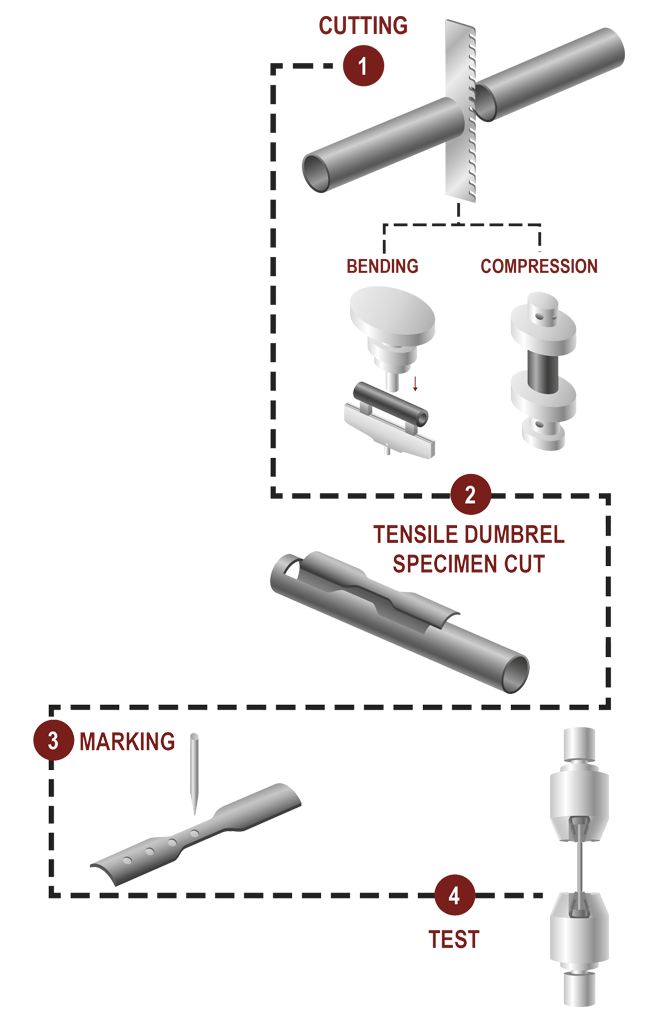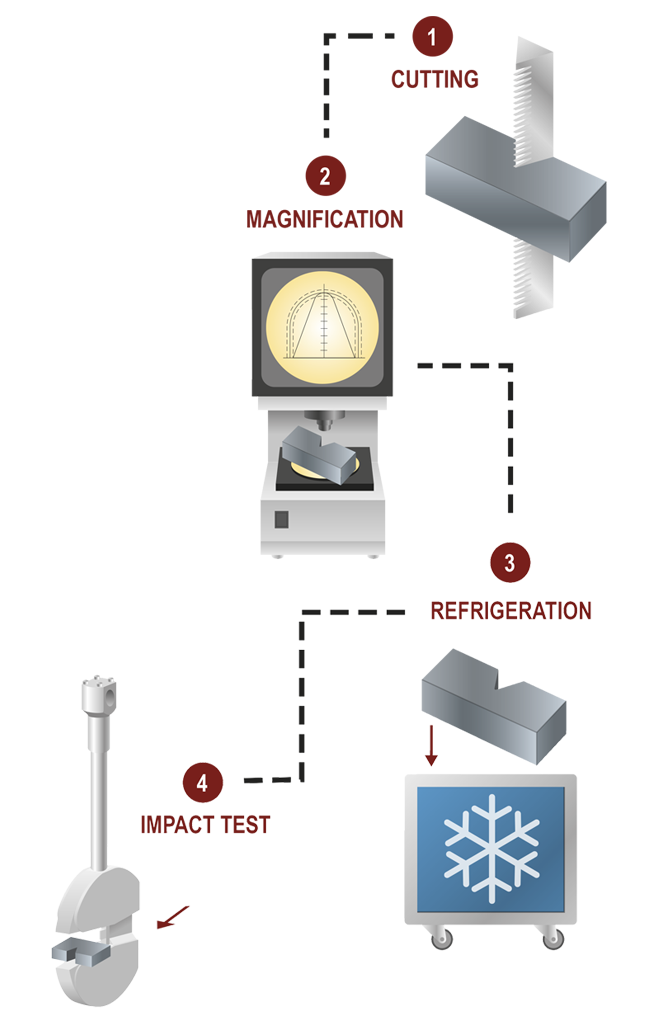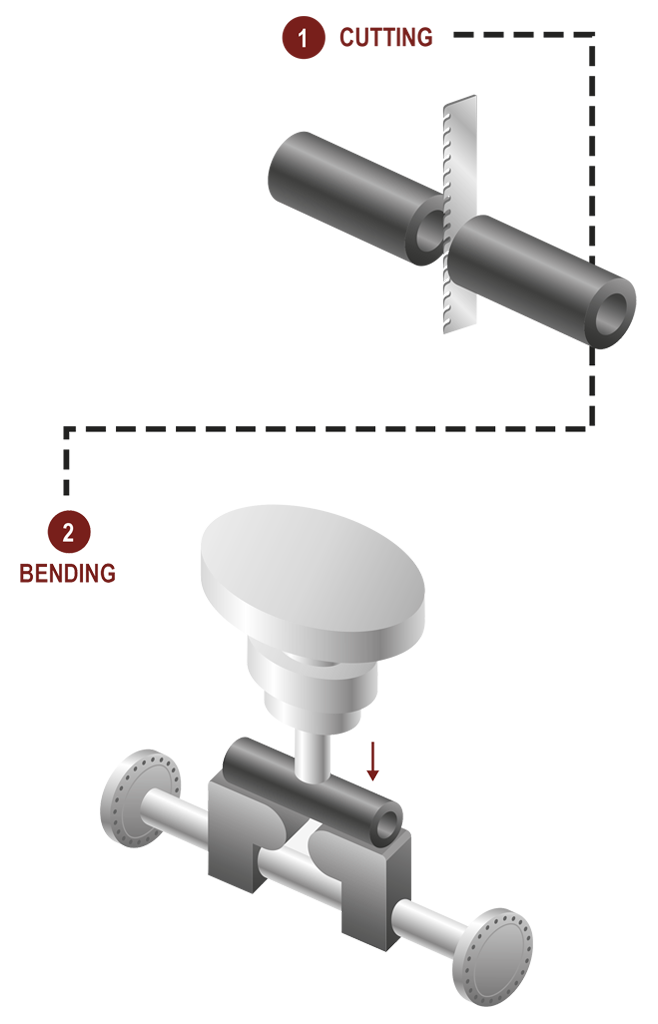
Tensile Test
Tensile testing is one of the simplest and most
widely used destructive mechanical testing
method that subjects a material sample to
uniaxial tension until failure.
A machined specimen is placed in the testing
machine and load is applied. An extensometer is
used to measure elongation.
The stress obtained at the highest applied force
is the Tensile Strength. The Yield Strength is the
stress at which a prescribed amount of plastic
deformation is produced. Elongation describes
the extent to which the specimen stretched
before fracture.
Information concerning the strength, stiffness,
and ductility of a material can be obtained from
a tensile test. Variations of the tensile testing
include : room temperature, low and high
temperature, shear tests, etc.
Many performance parameters can be measured
by tensile testing. The resulting data, a curve
of force vs extension, shows the tensile profile
of the test up to the point where the specimen
breaks. Along this tensile profile there are many
points of interest, chief among them the elastic
limit and force to break or failure point.

Impact Test
In material science, resilience is the ability of a
material to absorb energy when it is deformed
elastically, and release that energy upon
unloading. Proof resilience is defined as the
maximum energy that can be absorbed up to
the elastic limit, without creating a permanent
distortion. The modulus of resilience is defined
as the maximum energy that can be absorbed
per unit volume without creating a permanent
distortion.
In the laboratories the resilience is calculated
by the Charpy and Izod impact testing tests. The
apparatus consists of a pendulum of known
mass and length which is released from a
known height to impact a notched specimen.
The energy transferred to the material can be
inferred by comparing the difference in the
height of the hammer before and after the
fracture (energy absorbed by the fracture event).
The notch in the sample affects the results of the
impact test, thus it is necessary for the notch
to be of regular dimensions and geometry. The
size of the sample can also affect results, since
the dimensions determine whether or not the
material is in plane strain.

Bending Test
The bending flexural test provides modulus
of elasticity in bending values, flexural stress,
flexural strain and the flexural stress-strain
response of the material.
The upper-positioned cylinder applies the
bending force to specimen at preset angle.
Then two oppsite horizontal cylinders bend the
specimen to required angle.
The common test requires machines which allow
180° bend test with complete sets of mandrels
according to international standards.


